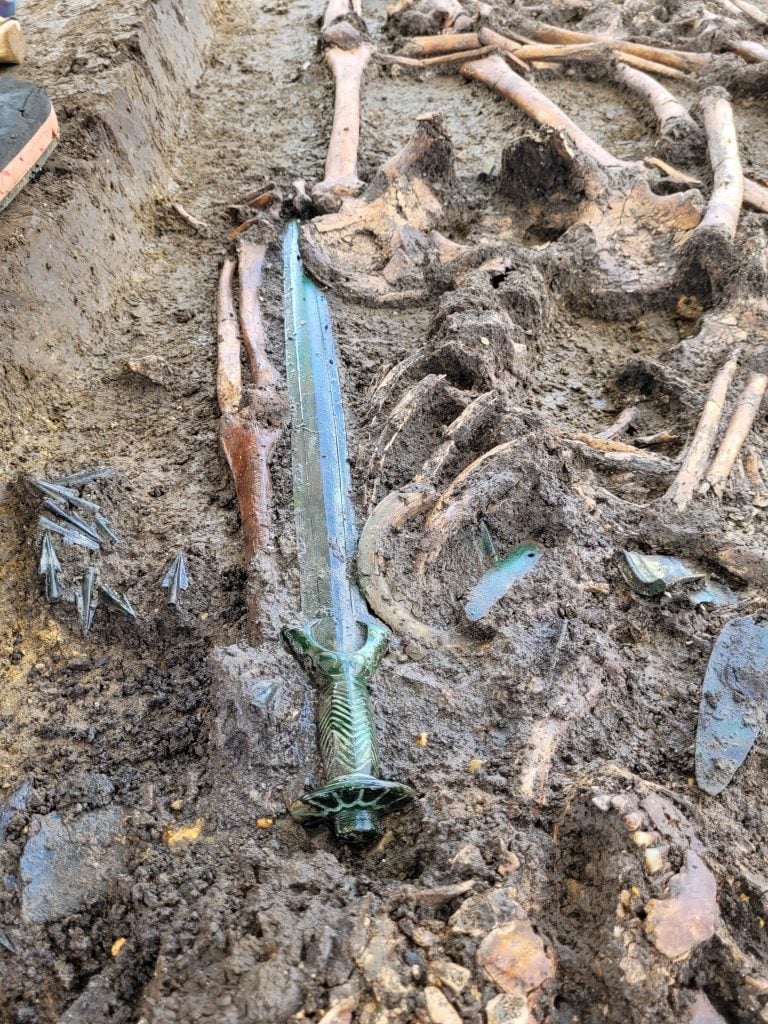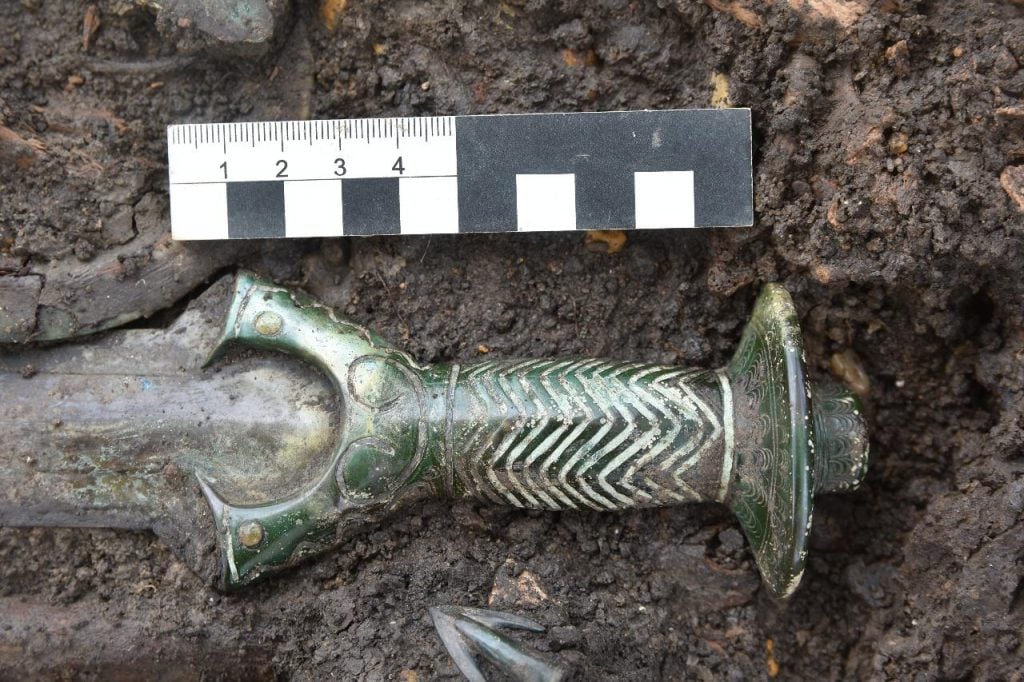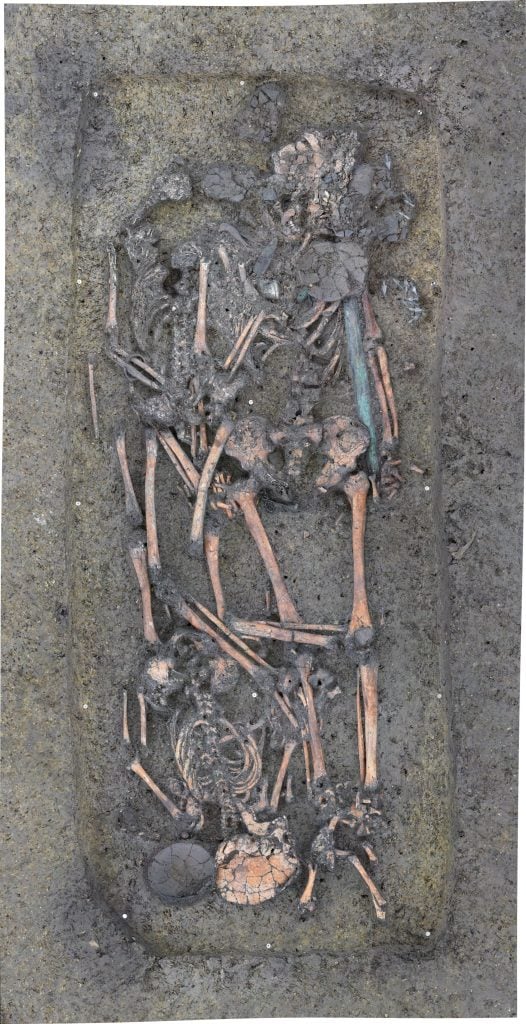Archaeology & History
German Archaeologists Find a 3,000-Year-Old Bronze Age Sword So Well Preserved That It ‘Almost Still Shines’
Regional looting has made the find in Bavaria extremely rare.

Regional looting has made the find in Bavaria extremely rare.

Richard Whiddington

German archeologists have discovered a 3,000-year-old sword during excavations outside the Bavarian town of Nördlingen. The weapon, which dates to the 14th century B.C.E., in the middle of the Bronze Age, was found in a grave and is in exceptional condition, so much so that “it almost still shines”, officials from Bavarian State Office for the Preservation of Monuments (BLFD) said in a statement released last week.
The sporadic looting of similar burial mounds in the area over the past 3,000 years makes the find at Nördlingen particularly rare.
The sword has an octagonal hilt marked with elegant inlays and is made entirely of bronze, evidencing a high-level of craftsmanship. Although the sword bears little sign of having being used in combat, archeologists say they believe it was a real rather than an ornamental weapon. “The center of gravity in the front part of the blade indicates that it was balanced mainly for slashing,” according to the statement.

The sword was found alongside the bones of a man, a woman, and a boy. Photo: courtesy Archäologie-Büro Dr. Woidich/Sergiu Tifui.
Found at the site of a former Celtic settlement, the sword was buried with other bronze objects in a grave alongside three people (a man, a woman, and a boy). Although this grouping is suggestive of a family unit, archeologists were keen to stress it remains unclear how, if at all, the three were related.
“There will be a detailed anthropological examination of the skeletons of the three deceased persons,” archeologist Dr. Hubert Fehr told Artnet News. “It may be possible this clarifies the question of whether the three died at the same time and what the causes of death were. A DNA analysis would clarify whether the three persons were biologically related.”

The sword exhibits high crafsmanship, archeologists said. Photo: courtesy Archäologie-Büro Dr. Woidich/Sergiu Tifui.
There were two main areas known for forging this type of octagonal swords in what is today Germany. Dense and homogenous soil conditions are to thank for the sword’s state of preservation, as it allowed for the development of a uniform patina on the metal.
After conserving the sword, archeologists hope to explore its provenance through a series of tests. “The composition of the sword’s alloys will be investigated and X-ray images will provide more information on the manufacturing process,” Fehr said. “The sword was produced using overlay casting, a technically very demanding variant of bronze casting.”

The sword was found in in the southern town of Nördlingen. Photo: courtesy Archäologie-Büro Dr. Woidich/Sergiu Tifui.
More Trending Stories: